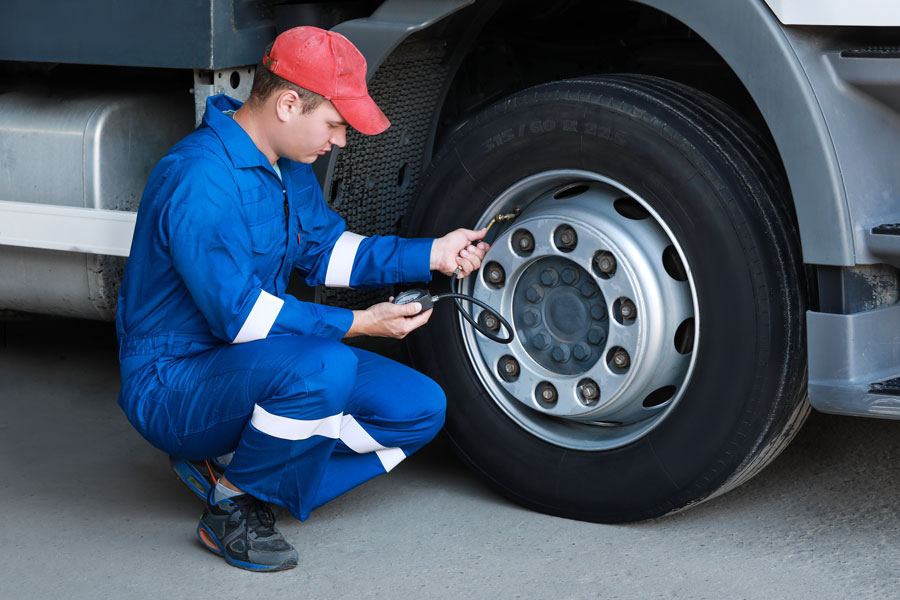Tyre pressure monitoring systems (TPMS) have already been a requirement for all newly registered passenger cars for around ten years. From 01/07/2024, TPM systems will now also be mandatory for all newly approved class N1-3, M2-3 and O3+4 vehicles. The first sensor manufacturers are therefore already preparing for the change with sensors for the aftermarket. Specific sensors are required, as passenger car sensors differ in technology and are therefore not suitable. They must be designed for higher tyre filling pressures and longer service life. The type of fixing may also differ.
The introduction of the TPMS requirement for commercial vehicles is certainly of great importance for general driving and road safety. The move is intended to prevent tyre bursts, which often result in serious accidents or even vehicle fires. Lorry breakdowns should also be avoided as far as possible. TPMS also has other benefits in addition to improving road safety. This includes lower fuel consumption and CO2 emissions, as well as a longer tyre service life.
What systems are available?
The current assumption is that direct systems will be used in the commercial vehicle sector. They monitor the tyre pressure using sensors in each tyre, which detect both gradual and rapid pressure loss. They are faster and more precise compared to passive measurement systems. The integrated wheel sensors should be read out every time a tyre is changed by a specialist dealer with a TPMS diagnostic device. The system must be taught in again when changing sensors or tyres. The disadvantages of the direct system include the additional costs and specialist knowledge required for changing tyres.
The challenge of TPMS for commercial vehicles
Most workshops already know how TPMS works and have experience with TPMS solutions for passenger cars. Due to the complexity, TPMS for commercial vehicles is a challenge for workshops. The technology of the systems differs from those for passenger cars and there are new factors to consider, such as the communication path between the tractor and trailer, i.e. the combination with a non-motorised trailer. This is because they have no OBD interface and no control unit. When decoupled, there is not even a power supply. A tyre pressure filling or control system would be permitted on a trailer unit, but many workshops still lack experience and knowledge in this field.
There is also a wide range of sensor and valve variants available, and the type of sensor mounting in TPMS systems can vary. Belt, valve mounting or containers glued into the tyres are currently available. In addition, suitable TPMS diagnostic tools are required, along with corresponding assembly tools, such as torque screwdrivers, depending on the type of sensor mounting.
For vehicles with a TPMS requirement, it must also be noted that the TPMS is part of the general operating license. This means that TPMS must function properly after service work on the tyre, for example after a puncture or tyre change. Another problem is that vehicle manufacturers are increasingly restricting access to the OBD interface, making teaching and configuring the sensors more difficult.
In general, it can be said that there are still many unanswered questions on this topic, and workshops and tyre dealers still have to address issues such as configuring and teaching in sensors, replacing complete wheels or individual sensors.

